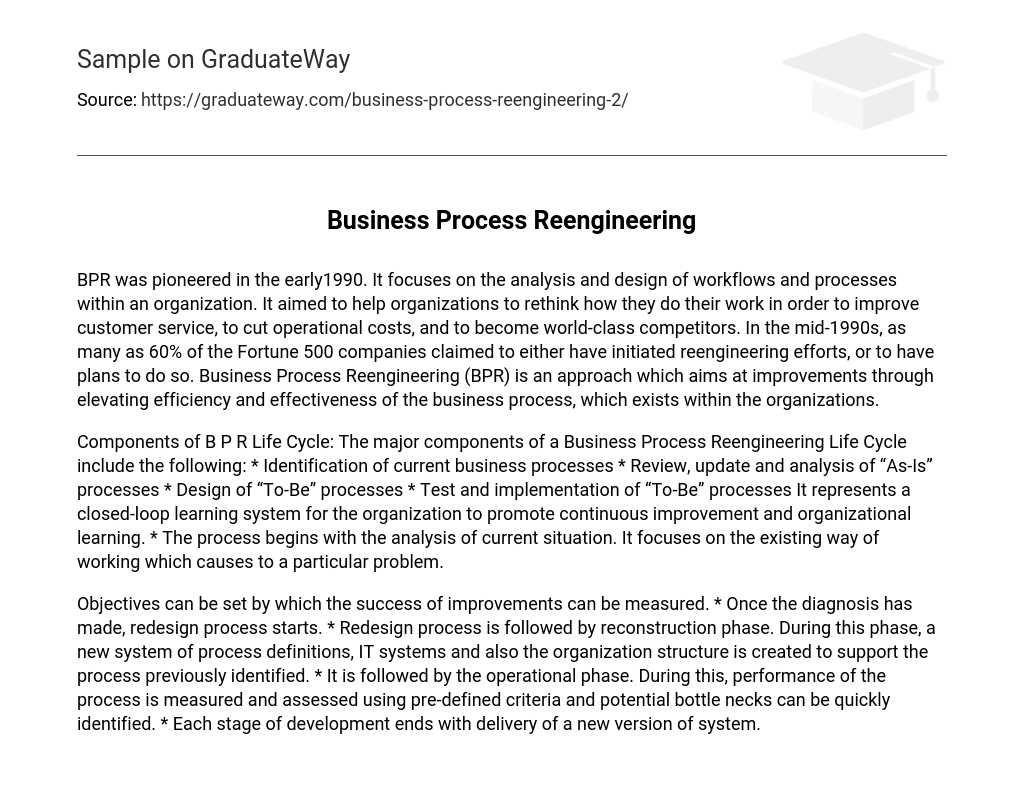BPR, or Business Process Reengineering, was initially introduced in the early 1990s with the purpose of examining and designing workflows and processes within organizations. Its primary objective is to assist organizations in reassessing their work methods for the purpose of enhancing customer service, lowering operational costs, and establishing themselves as formidable competitors in their respective industries. By the mid-1990s, approximately 60% of Fortune 500 companies had either initiated reengineering initiatives or intended to do so. BPR strives to improve the efficiency and effectiveness of existing business processes within organizations.
The major components of a Business Process Reengineering Life Cycle include the following:
- Identification of current business processes
- Review, update and analysis of “As-Is” processes
- Design of “To-Be” processes
- Test and implementation of “To-Be” processes
This life cycle represents a closed-loop learning system for the organization to promote continuous improvement and organizational learning. It begins with the analysis of the current situation and focuses on the existing way of working that leads to a particular problem.
Objectives can be established to measure the success of improvements. Once the diagnosis is complete, the redesign process begins. This is followed by the reconstruction phase, where a new system for process definitions, IT systems, and organizational structure is created to support the previously identified process. Next comes the operational phase, during which the process performance is measured and assessed using predefined criteria, allowing for quick identification of potential bottlenecks. Finally, each stage of development concludes with the delivery of a new system version.





